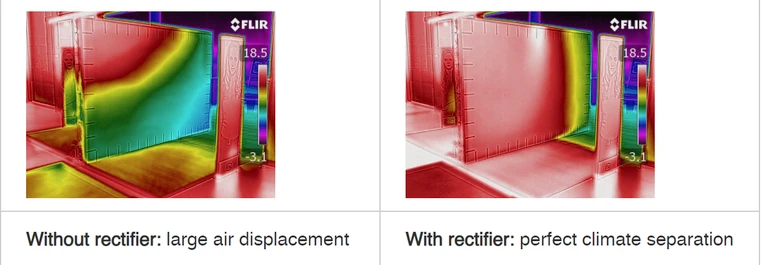Air curtains and their efficiency at repelling insects
Air curtains with Biddle's rectifier technology offer numerous key benefits in protecting against insect entry.
The effectiveness of air curtains with rectifiers on repelling insects
At best, flying insects successfully entering buildings a continuous inconvenience for many public spaces – with flies, mosquitoes and wasps irritating customers, creating an uncomfortable environment and damaging the reputation of a brand. At worst, the presence of insects becomes a source of serious contamination and a risk to health.

The challenge
Businesses handling edible goods, such as butchers, bakeries and cafes, often struggle with insects entering through doors; impacting upon both food hygiene as well as environmental comfort. Similarly, industrial food manufacturing and other production sites see a decline in the quality of products when insects are present. Medical buildings such as hospitals and clinics also face extreme consequences if insects are able to get inside the building; with the potential for insect-borne diseases, a major concern for the World Health Organisation.

The Solution
Most existing solutions attempt to alleviate these issues by attempting to deal with insects once they are already inside the building.
Examples include: fly paper, chemical substances, ultrasound, UV lamps. These solutions can not only be harmful to the environment, but do not deal with the source of the problem: the successful entry of insects into building.
Biddle’s objective is to stop insects from gaining initial access into buildings. In partnership with the Laboratory of Environmental Toxicology of INRA, Biddle conducted a study into the effectiveness of air curtains in reducing the successful entry of insects into an area. Dr. Luc Belzunces, Director of Research, published the results in the international research journal: Pest Management Science.
The study was conducted using bees, whose kinetic energy and strong will makes preventing entry more difficult in comparison with lighter, slower and less motivated insects. Bees from the experimental apiary of the Research Unit INRA Abeilles et Environment were conditioned to visit a food source at regular hours. The number of bees on the feeder was recorded at regular intervals using a high resolution camera.
The Result
Biddle then installed an air curtain at the entrance of the room covering the entire width and height of the opening with the ability to vary the speed and airflow.
All Biddle air curtains are equipped with patented rectifier technology. The rectifier allows for efficient climate separation through the ability to blow air directly downwards evenly across the entire width of the opening; allowing for optimum efficiency as the air stream reaches the floor at a lower, less forceful speed than an air curtain that does not feature a rectifier. For the same airflow the range of the jet is increased by 40% (TNO Research Center, NL). The air curtain used in the study had a thickness of 124.5 mm and an optimum ground speed of 4.23m/s.
INRA researchers concluded that:
“After 15 minutes, the anti-insect efficacy is 99.9% and remains stable thereafter.”
Additionally, with the honeybee being unable to fly when faced with an air velocity of 8.3m/s, lighter insects such as mosquitoes become unable to fly at 3m/s. It can therefore be concluded that almost all insects will be prevented from gaining entry through the use of an air curtain featuring a rectifier.
-
Case Study | Air Curtains and their efficiency at repelling insects